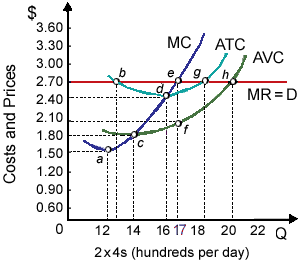Total revenue roughly for the profit-maximizing lumber mill equivalents: (i) $1700 daily. (ii) $2500 daily. (iii) $3500 daily. (iv) $4590 daily. (v) $6000 daily.

I need a good answer on the topic of Economics problems. Please give me your suggestion for the same by using above options.